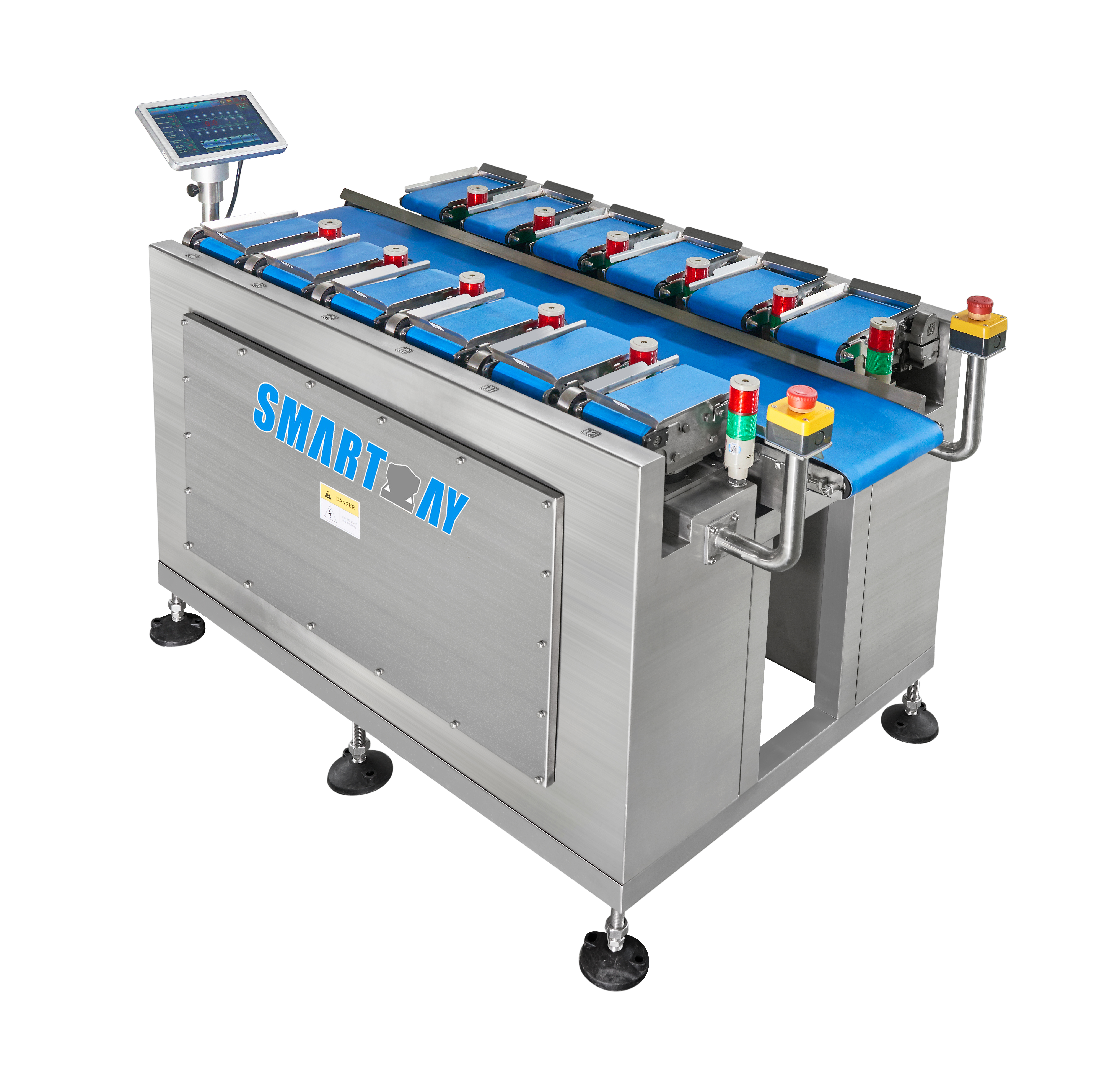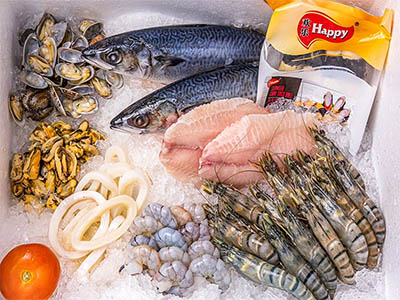Since 2012 - Smart Weigh is committed to helping clients increase productivity at a reduced cost. Contact us Now!
Since 2012 - Smart Weigh is committed to helping clients increase productivity at a reduced cost. Contact us Now!

The seafood processing industry faces a unique set of challenges that require precision, efficiency, and adaptability at every stage of production. One of the biggest hurdles is the wide variation in the size, shape, and texture of seafood products, ranging from whole fish to delicate fillets and irregularly shaped shellfish. These variations can make it difficult to achieve uniform weight distribution, which is essential for maintaining product consistency, customer satisfaction, and regulatory compliance.
Another challenge is the speed at which seafood products must be processed. Processing lines need to be fast and efficient to meet market demand, while still ensuring that each package contains the correct amount of product. Inaccurate weighing can lead to waste, spoilage, and financial losses, particularly in a high-demand sector like seafood.
Accurate weighing in seafood processing is critical for multiple reasons. Properly weighed portions ensure that processors meet regulatory packaging weight labeling requirements, control costs effectively, and maintain consistent product quality. For seafood processors, the ability to deliver precise and consistent portions can directly impact profitability, brand reputation, and customer satisfaction.
In light of these challenges, automation and precision weighing systems are crucial for optimizing seafood packaging operations. The Belt Combination Weigher is one such solution, offering enhanced accuracy and speed to address these very issues.
Inconsistent portioning is one of the primary challenges in seafood packaging. Overpackaging leads to waste, increased costs, and lower profit margins, while underpackaging can result in dissatisfied customers and potential legal repercussions. Inaccurate weighing also complicates inventory management, as discrepancies in package weight can make it difficult to track product quantities.
Moreover, seafood processors must navigate the complexities of packaging high-value products. Any deviation in portion size, even if minimal, can quickly add up, resulting in significant financial loss over time.
The seafood industry is tightly regulated, with strict standards for weight labeling and food safety. Accurate weighing is vital for meeting these regulations, ensuring that packaging labels reflect the correct net weight and that products are safe for consumption. Any failure to comply with these standards can lead to penalties, product recalls, and loss of consumer trust.
For seafood processors, maintaining customer satisfaction is paramount. Accurate, consistent packaging is essential to building brand loyalty. Customers expect to receive the amount of product they paid for, and variations in portion sizes can undermine their trust in the brand. By offering precise weight measurements, processors can enhance product quality and foster long-term customer relationships.

One of the key features of the Belt Combination Weigher is its ability to handle a wide range of seafood products with varying sizes, shapes, and textures. Whether it's whole fish, fillets, or shellfish, this system is designed to provide flexibility in processing. Unlike traditional weighers that struggle with irregular shapes, the belt combination weigher uses sophisticated technology to ensure even the most challenging products are weighed accurately.
The multi-head weighing system of the belt combination weigher is its standout feature. It utilizes multiple load cells to simultaneously weigh different portions of product and then combines these portions to achieve the most accurate total weight. This is particularly useful in seafood processing, where product sizes can differ significantly from one unit to another. The combination of portions from different heads ensures that the final weight is as precise as possible.
Seafood processing plants operate at high speeds, with large quantities of product being processed at once. The Belt Combination Weigher excels in this environment, offering both precision and high-speed operation. It can weigh products quickly, without sacrificing accuracy, making it ideal for fast-paced production lines. The result is increased throughput, reduced bottlenecks, and faster time-to-market for seafood products.
Given the perishable nature of seafood, hygiene is critical in seafood processing. The Belt Combination Weigher is designed with food safety in mind, featuring food-grade materials and easy-to-clean surfaces. Its hygienic design minimizes the risk of contamination and ensures compliance with food safety regulations, which are particularly stringent in the seafood industry.
The automation provided by the Belt Combination Weigher significantly boosts production efficiency. By reducing the need for manual weighing and packaging, processors can increase throughput without compromising product quality. This leads to faster production cycles, which is crucial in meeting tight market deadlines.
Precise weighing minimizes product waste by ensuring that each package contains only the required amount of product. This not only reduces the amount of excess material that ends up in the trash but also helps processors optimize packaging material usage, leading to significant cost savings. In high-volume seafood processing, even small reductions in waste can result in substantial savings over time.
The belt combination weigher ensures uniform weight distribution across all packaging, which is essential for maintaining consistent product quality. Whether the product is a whole fish, fillet, or shellfish, each package will have an even weight, ensuring that customers receive the same quality product every time.
Automation significantly reduces the reliance on manual labor, which not only cuts down on labor costs but also minimizes human error. With automated weighing and packaging, operators can focus on other tasks while the weigher ensures fast, precise portioning. This leads to faster processing times and streamlined operations.
Before implementing a Belt Combination Weigher, it is essential to assess the volume of products processed, the weight ranges, and specific requirements of your plant. Understanding the variations in product size, shape, and texture will help determine the most suitable model for your operation.
When choosing the right model of Belt Combination Weigher, processors should consider factors such as capacity, accuracy, and environmental conditions. For seafood, conditions like humidity and temperature can affect performance, so it is crucial to select a model that can withstand these factors.
The Belt Combination Weigher is designed to integrate seamlessly with existing production lines, including packaging machines, conveyors, and other automation tools. This ensures a smooth transition and helps avoid disruptions in the production process. Proper integration allows for a more cohesive and efficient system, improving overall plant performance.
Proper installation is crucial for ensuring that the system operates at optimal performance. It is also important to provide comprehensive training for operators to ensure they are well-versed in system functions, maintenance procedures, and troubleshooting. Regular maintenance and calibration will ensure the system continues to provide accurate measurements over time.
Seafood processors face significant challenges when it comes to maintaining accurate weighing, reducing waste, and ensuring product consistency. The Belt Combination Weigher addresses these challenges by providing an adaptable, precise, and efficient solution that enhances packaging accuracy and optimizes production.
Don't let inconsistent weighing and packaging inefficiencies hold back your seafood processing operation. Upgrade to the Belt Combination Weigher from Smart Weigh Packaging Machinery Co., Ltd., and experience improved accuracy, reduced waste, and higher profitability. Our solutions are specifically designed to streamline seafood packaging processes, improve throughput, and ensure consistent product quality every time.
Contact us today to learn how the Belt Combination Weigher can revolutionize your seafood processing line! Whether you're looking to increase efficiency, reduce operational costs, or ensure compliance with industry standards, our team at Smart Weigh Packaging Machinery Co., Ltd. is here to help you find the right solution.
Email us at: export@smartweighpack.com for more information or to request a consultation. Let's optimize your packaging process together!
CONTACT US
Building B, Kunxin Industrial Park, No. 55, Dong Fu Road , Dongfeng Town, Zhongshan City, Guangdong Province, China ,528425
How We Do It Meet And Define Global
Related Packaging Machinery
Contact us, we can give you professional food packaging turnkey solutions

Copyright © Guangdong Smartweigh Packaging Machinery Co., Ltd. | All Rights Reserved